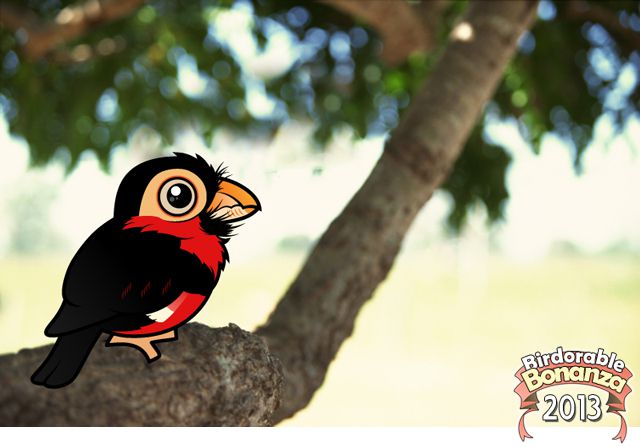2013 Bonanza Bird #6
The Vibrant and Eye-Catching Plumage of Africa's Bearded Barbet
We're thrilled to continue our journey towards our 500th Birdorable species by introducing a new bird each day. Today, we're excited to showcase the Bearded Barbet, a remarkable and visually striking bird native to the western regions of Africa.

Known for their stocky build, these birds boast a bold and vibrant plumage. The combination of deep red and black feathers, complemented by a distinctive yellow eye patch, makes the Bearded Barbet an extraordinarily beautiful and eye-catching bird.
One of the most striking features of the Bearded Barbet, as its name suggests, is the pronounced bristles around its face. These bristles, or barbs, are a characteristic trait of the barbet family, which consists of 84 species spread across South America, Africa, and Asia. The word 'barbet' is believed to be derived from the word 'barb', possibly referring to these distinctive bristles that resemble 'feather shaft branches' or 'plant hairs'. Among all its relatives, the Bearded Barbet has the most pronounced bristles, making its name a fitting description of its appearance.

Bearded Barbets are known to have a relatively long lifespan, living up to 15 years. They are also known to breed well in captivity and are a common sight in zoos and aviaries around the world. This adaptability to captive environments has made them a favorite among bird enthusiasts and conservationists.
Tomorrow's new species is a bird of prey that belongs in the falcon family but sometimes acts more like a vulture! Check out the blog tomorrow to see what our newest bird is.










Comments
Leave a comment
Thank you!